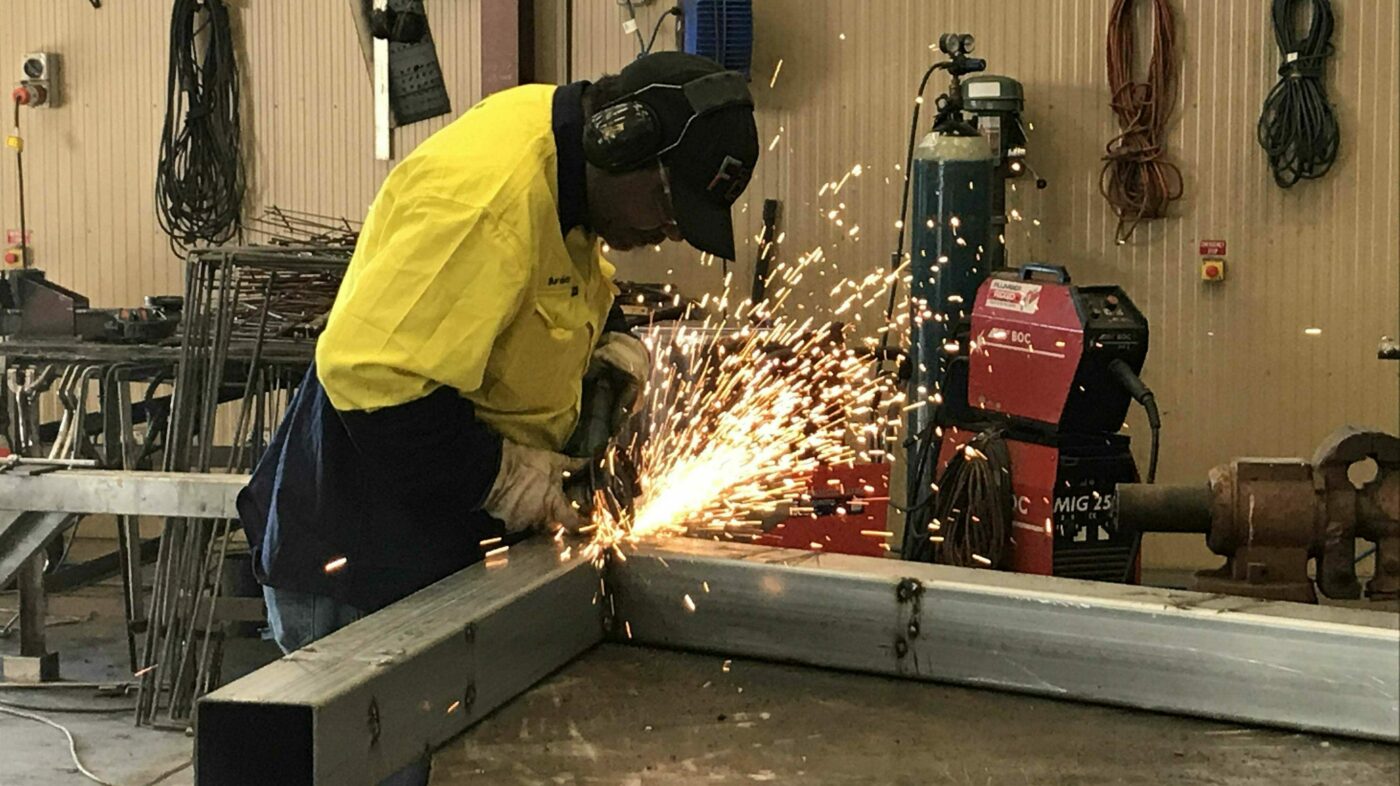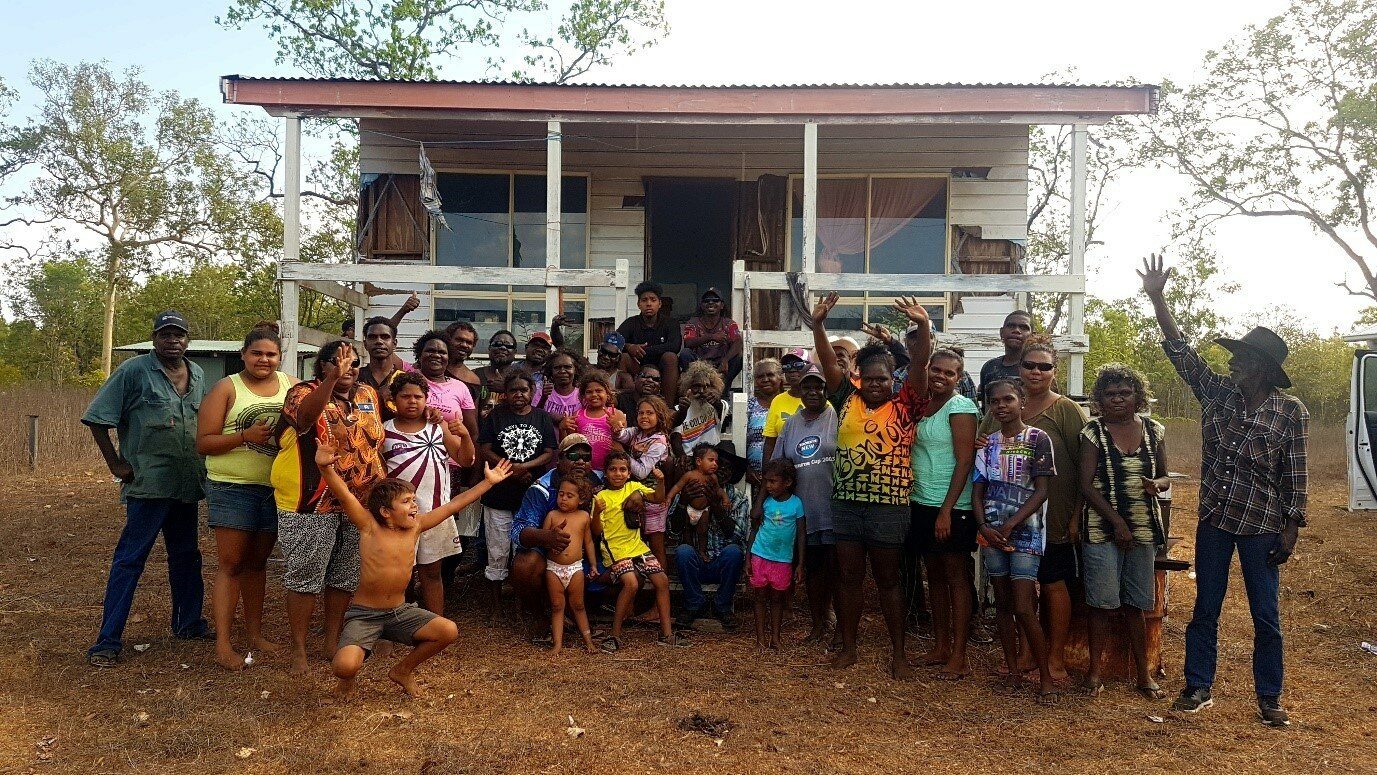Since its inception in 1980, the Centre for Appropriate Technology (CfAT) has been a brightly shining beacon in remote Australia, relentlessly striving to unlock choices to live on country, connect with country and develop economic opportunity for Aboriginal and Torres Strait Islander peoples. Through the provision of modern life’s essential building blocks - adequate water supplies, accessible energy services, affordable housing, and reliable telecommunications infrastructure to name but a few - CfAT has proudly led the way in helping people in remote communities lead better lives.

When government funding was withdrawn in 2014, CfAT faced the start of a huge ongoing challenge in transitioning, and downsizing, from an NGO to a commercial not-for-profit company… but the size of that challenge didn’t stop this incredibly innovative, utterly driven organisation securing one of its most significant successes on behalf of the communities it represents.
Real Time Earth ground station lands at Alice Springs.
A Real Time Earth ground station (RTE) forms part of a hybrid space and ground network being developed by the US multinational company Viasat Inc., that brings increased affordability and efficiency to earth observations and remote sensing applications, typically used by low earth orbit satellites providing data to environmental, shipping, oil, gas, government and other industries, giving them vital information on demand without the need to invest in dedicated antenna systems.
“Put simply”, explains CfAT CEO and committed campaigner, Dr Steve Rogers, “an RTE’s fundamental value proposition is to reduce the time it takes satellite images and data to get from space to the customer. a technological development which is strongly aligned with priorities of the new Australian Space Agency, which is seeking to increase opportunities within Australia’s space industry and develop world-leading core infrastructure.”
Exciting stuff indeed. But how it did come to be that CfAT is involved in this project and, more importantly, what are the benefits to the communities it represents?
Dr Rogers explains: “Viasat, the ground station network operator, was looking for an RTE site in Australia. They approached CfAT for a number of reasons. Firstly, we already host a Commonwealth Government Geoscience Australia, Ground Station facility on our 38 hectare site in Alice Springs, which has all the necessary infrastructure needed, such as high-speed high-capacity fibre, plus we have our own wholly owned engineering subsidiary, Ekistica Pty Ltd, so we were perfectly placed to project manage the satellite antenna installation. And Alice Springs itself has the ideal environmental conditions for ground station satellite communications, like low cloud cover, low radio frequency interference, and low aerosol pollution. In other words, we ticked all the boxes.”
This multi-million dollar RTE investment, supported by an Indigenous Business Australia investment loan ticks all the boxes when it comes to community benefits, too. Dr Rogers states proudly that, “The Alice Springs RTE makes Central Australia a key player in the burgeoning global satellite and space industry, with Indigenous Australians as leading participants in the sector. The project will create jobs in construction, facilities management and maintenance contracts, plus of course the significant income that CfAT receives will be fully re-invested back into our core business of providing infrastructure solutions to remote Indigenous communities.”
With the Alice RTE ready for lift off, what’s next for CfAT initiatives?
“The RTE project is undoubtedly an immense success,” says Dr Rogers, “which will go a long way towards achieving CfAT’s core objectives. But there is still much work to be done. Remote and regional Australia is facing many challenges… declining population, stagnant economy, and significant infrastructure issues. But the good news is that over decades CfAT and our corporate subsidiaries have developed an innate understanding of this unique environment, so we’re very well placed – and very determined – to meet those challenges.”

Dr Rogers added: “In particular, we see significant future commercial opportunities, which in turn means more money for our core causes. Since going public with the Viasat deal we have been approached by a number of other multi-national commercial satellite businesses, all of which are interested in establishing ground station infrastructure at our Central Australia site. There are exciting times ahead… monetising our assets to help realise our vision of creating a whole new narrative for the Indigenous peoples in remote Australia, seeing them work at the cutting edge of 21st century technology and commerce, whilst still maintaining their 50,000 years of culture.”
After an impressive career in roles such as MD and CEO of international mining technology innovation centres, and 13 years with CSIRO as an environmental microbiology and biogeochemistry research scientist, in 2015 Dr Rogers sought out a challenging role that used his commercial and leadership skills to deliver social benefit, instead of better corporate bottom lines. And along with the dedicated staff and Board of Directors he’s certainly done that, leading an incredible organisation doing incredible things.
Plus, as he openly admits, there are other worthy reasons for taking this CfAT role in the Territory: “The people, culture and landscape are stunning… and my daily commute to work is eight minutes.”
The fact that Dr Rogers has found such a good work-life balance is a testament to the strong culture at CfAT and the wonderful communities they represent. Dr Rogers’ hunger for a challenge ensures CfAT is in safe hands as the organisation continues to transition to its new life as a not-for-profit commercial company. The RTE ground station in Alice Springs is the first major success in this strategy, and it’s a big one, but CfAT has a truly national focus and is determined to nurture many other current projects to bear similar fruits in remote regions of the Northern Territory, Western Australia, Queensland and South Australia, that ultimately deliver benefit to indigenous people.
As CfAT is one of DW FoxTucker’s longest standing clients, we know they have what it takes to deliver… so, watch this space!
CfAT’s core commitments to remote Australia:
Promote technology innovation and application…
…such as the CfAT mobile phone hotspot. A low cost, passive technology that extends mobile phone signals from an average of 10km from a transmission tower to up to 100km. The technology requires no power, has no moving parts and requires minimal maintenance - ideal for remote locations. So far 46 hotspots have been installed in the Northern Territory, along major highways, at tourist attractions and in remote Indigenous communities… the technology has won engineering awards and is patent pending.
Applied project design, infrastructure, engineering and professional services…
…such as the establishment of Koongarra Outstation, a new traditional Owner outstation on a ‘greenfield’ site within Kakadu National Park. This project involved design and construction of a three bedroom house, installation of a solar water bore and reticulation infrastructure, design and construction of a renewable power system with solar, battery storage and generator back up, not to mention design and installation of bush ecotourism campsite infrastructure.
Community engagement, planning and facilitation…
…such as a Telstra Digital Inclusion Survey, engaging in remote communities across remote Northern Australia and recording satisfaction levels with Telstra service provision.

Place-based accredited training, skills development and capacity building…
…such as accredited Registered Training Organisations, delivering job related vocational training in construction, plant operation and automotive to Indigenous trainees in remote communities.
Aboriginal and Torres Strait Islander enterprise and jobs…
… Aboriginal and Torres Strait Islander employment participation is currently at 54%. Initiatives to improve this figure include commercial metal fabrication workshops, and commercial facility management teams which exclusively employ Indigenous staff.
For More Information About CfAT:
Phone: (08) 8959 6100
Visit: https://cfat.org.au
